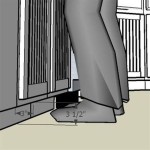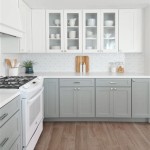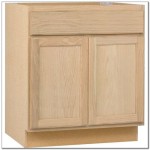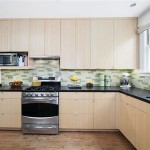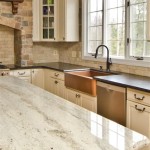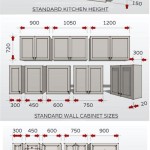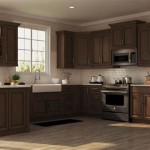The Standard Gap Between Upper and Lower Cabinets in Kitchen Design
The kitchen is the heart of any home, and its design plays a crucial role in creating a functional and aesthetically pleasing space. Among the many design elements to consider, the gap between upper and lower cabinets stands out as a particularly important factor. This gap, often referred to as the countertop overhang, impacts both the functionality and visual appeal of the kitchen. A well-designed gap ensures comfortable workspaces, adequate storage access, and a harmonious look. This article delves into the standard gap between upper and lower kitchen cabinets, examining the factors influencing this measurement and its implications for kitchen design.
Factors Determining the Standard Gap
The standard gap between upper and lower cabinets is typically 18 inches, although this can vary depending on several factors. These factors include countertop depth, cabinet height, and personal preference. The countertop depth, which is the distance from the front edge to the back edge, directly impacts the gap. A deeper countertop necessitates a larger gap to ensure adequate workspace and prevent obstructions while working. Similarly, cabinet height plays a role. Taller cabinets may require a slightly smaller gap to maintain visual balance and prevent the overall kitchen from feeling cramped.
Personal preference also plays a significant role in determining the ideal gap. Some individuals prefer a larger gap to provide ample workspace and a sense of openness, while others favor a smaller gap for a more compact and streamlined design. The function of the kitchen itself also influences the preferred gap. For example, kitchens primarily used for cooking may benefit from a larger gap to accommodate large cookware and appliances, while kitchens primarily used for entertaining may prefer a smaller gap to create a more intimate feel.
Implications of the Gap for Functionality and Aesthetics
The standard gap between upper and lower cabinets has a significant impact on the functionality and aesthetics of the kitchen. A well-designed gap ensures adequate workspace, comfortable movement, and a harmonious visual appeal. A large enough gap provides ample countertop space for food preparation, cooking, and serving. It also allows for comfortable movement around the work area, preventing collisions with cabinets or appliances. Additionally, a sufficient gap provides ample space for hanging pendant lights or other overhead lighting, enhancing the functionality and aesthetics of the kitchen.
From an aesthetic perspective, the gap between upper and lower cabinets plays a crucial role in the visual balance of the kitchen. A well-proportioned gap creates a harmonized and aesthetically pleasing design. It also allows for the incorporation of backsplashes, decorative elements, or accent lighting that complement the overall kitchen design. Conversely, an overly large gap can make the kitchen feel disjointed and visually unbalanced, while an overly small gap can create a cramped and uncomfortable environment. The ideal gap is one that balances functionality and aesthetics, creating a space that is both practical and visually appealing.
Addressing Common Concerns Regarding the Gap
One common concern regarding the gap between upper and lower cabinets is the potential for clutter and dust accumulation. To address this issue, consider incorporating open shelves or a combination of open shelving and closed cabinetry. Open shelves provide easy access to frequently used items while also adding a contemporary and airy feel to the kitchen. Additionally, regular cleaning can help prevent dust accumulation. Another concern is the potential for a large gap to make the kitchen feel less cozy. To address this, consider incorporating a smaller gap near the dining area or seating area to create a more intimate feel. You can also use the space above the cabinets to display decorative items or artwork, adding visual interest and warmth to the kitchen.
The gap between upper and lower cabinets is a crucial design element that impacts both the functionality and aesthetics of the kitchen. Understanding the factors influencing the standard gap and its implications can help create a space that is both practical and visually appealing. By carefully considering the countertop depth, cabinet height, personal preference, and function of the kitchen, homeowners can create a well-designed kitchen that meets their unique needs and preferences. Ultimately, the ideal gap is one that balances functionality and aesthetics, creating a space that is both practical and visually appealing.

Kitchen Cabinet Measurements Clearances Kadilak Homes

Do Instructions Result In 18 Between Counter Top And Upper

Kitchen Cabinet Measurements Clearances Kadilak Homes

Your Kitchen Renovation Measured For Perfection Rona

Kitchen Cabinet Measurements Clearances Kadilak Homes

Homebliss The Hippest Community For Home Interiors And Design

Recommended Distance Between Countertop And Upper Cabinets Angi

Kitchen Design Measurements Ideal Clearances For Counters Islands Cabinets More

Recommended Distance Between Countertop And Upper Cabinets Angi

Space Between Ceiling And Cabinets Kitchen Remodeling Express Greensboro Nc
Related Posts

